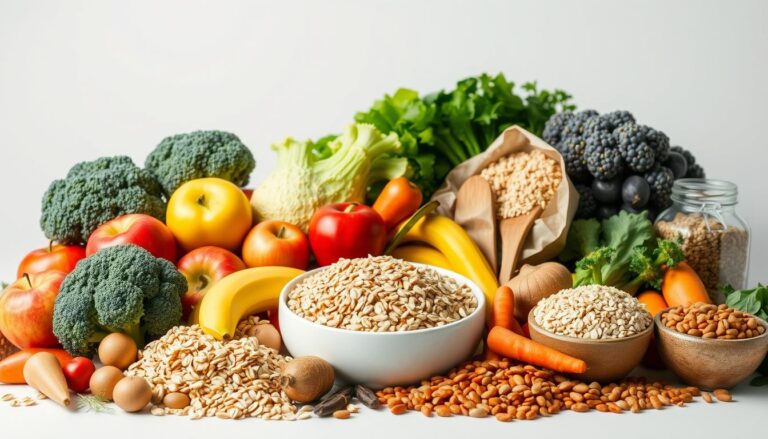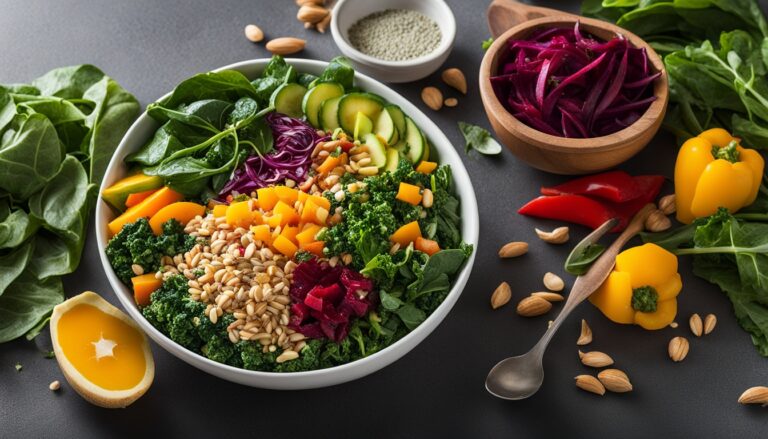Have you ever wondered how your food choices can directly influence your blood sugar levels? Managing health through nutrition is more than just a trend it’s a science backed approach to improving well being.
The foods you eat play a critical role in maintaining stable blood sugar and supporting long-term health outcomes.
Collaborations like those between the American Diabetes Association and Homemade chefs highlight the importance of combining medical needs with cultural and personal preferences. Monthly cooking classes offer practical tips for creating meals that are both delicious and health-conscious.
Strategies such as carb control, the plate method, and lifestyle integration are key to sustainable eating patterns. Resources like the CDC’s Tasty Recipes for People with Diabetes provide accessible options for those looking to make smarter food choices. A holistic approach ensures that managing health doesn’t mean sacrificing flavor or enjoyment.
Key Takeaways
- Food choices directly impact blood sugar levels and overall health.
- Collaborations between health organizations and chefs offer practical meal solutions.
- Carb control and the plate method are effective strategies for managing nutrition.
- Sustainable eating patterns are more beneficial than restrictive diets.
- Resources like the CDC’s recipe guide make healthy eating accessible.
Understanding Diabetes and Its Impact on Health
Understanding how your body processes sugar is key to managing health effectively. Glucose, a primary energy source, relies on insulin for transportation into cells. When this process falters it can lead to serious health issues.
What is Diabetes?
Diabetes occurs when the body struggles to regulate blood glucose levels. In Type 1, the body doesn’t produce insulin. In Type 2 insulin resistance develops, making it harder for cells to absorb glucose. Prediabetes with blood glucose levels between 100-125 mg/dL often precedes full blown diabetes.
How Does Diabetes Affect Your Body?
Uncontrolled diabetes can damage blood vessels, leading to complications like vision loss, cardiovascular issues, and nerve damage. The CDC highlights that diabetes is a leading cause of heart disease. NIH research shows long-term organ damage is common without proper management.
Diabetes is not just a disease of sugar it’s a disease of the blood vessels.
Understanding these risks underscores the importance of early intervention. The American Heart Association emphasizes the connection between diabetes and heart health, urging proactive measures for disease control prevention.
The Role of Diet in Managing Diabetes
The foods you eat can make a big difference in how your body handles sugar. Meals high in carbohydrates often cause rapid spikes in glucose levels. Balancing carbs with protein and fat slows this process, helping maintain steady energy.

Understanding the glycemic index is key. Foods like white bread and sugary drinks rank high, causing quick sugar surges. Whole grains, vegetables, and lean proteins rank lower, providing sustained energy.
How Food Choices Affect Blood Sugar Levels
Not all carbs are created equal. Whole fruits, for example, are better than fruit juice. The fiber in whole fruits slows sugar absorption, while juice delivers a concentrated sugar hit. The CDC recommends carb counting to manage intake effectively.
- Pair carbs with protein or fat to slow glucose absorption.
- Choose whole fruits over juice for better metabolic impact.
- Follow the ADA’s plate method: 50% non-starchy vegetables, 25% lean protein, 25% quality carbohydrates.
The Importance of a Balanced Diet
A balanced diet supports long-term health. NIH research shows dietary interventions can significantly improve outcomes. Mayo Clinic highlights the benefits of plant-based meals, rich in fiber and nutrients.
Healthy eating isn’t about restriction. It’s about making smarter choices. Focus on whole, unprocessed foods. Incorporate a variety of colors and textures to ensure nutrient diversity.
Best Foods to Eat for Diabetes Management
Choosing the right foods can transform how your body manages sugar levels. Nutrient-rich options provide sustained energy and support overall health. Focus on whole, unprocessed items to maximize benefits.
Fruits and Vegetables
Non-starchy vegetables like broccoli, spinach, and green beans are excellent choices. They are low in carbs and high in fiber, helping to stabilize sugar levels. The ADA recommends filling half your plate with these nutrient-packed options.
When it comes to fruits, opt for whole varieties over juices. Whole fruits have fiber, which slows sugar absorption. Here’s a comparison of glycemic loads for common fruits:
| Fruit | Glycemic Load per serving |
|---|---|
| Apple | 6 |
| Banana | 10 |
| Berries | 1-3 |
| Orange | 5 |
Whole Grains and Fiber Rich Foods
Whole grains like oats and quinoa are rich in beta-glucan, a type of fiber that improves insulin sensitivity. They also provide long-lasting energy without causing sugar spikes. Aim for at least three servings daily.
Fiber rich foods, such as lentils and beans, are also beneficial. They promote digestive health and help regulate sugar levels. The NIH highlights their role in reducing chronic disease risks.
Lean Proteins and Healthy Fats
Lean proteins like skinless poultry, tofu, and eggs are essential for muscle repair and energy. Pair them with healthy fats from avocados, nuts, and olive oil for balanced meals. These fats support heart health and reduce inflammation.
Fatty fish, such as salmon, are rich in omega-3 fatty acids. These nutrients improve cardiovascular health and reduce inflammation. The NIH recommends including fish in your diet at least twice a week.
Low-fat dairy products, like yogurt and milk, provide calcium and protein. They are a great addition to a balanced meal plan. Homemade chefs suggest roasting vegetables with olive oil for added flavor and nutrients.
Foods to Limit or Avoid for Better Blood Sugar Control
Not all foods are created equal when it comes to maintaining stable glucose. Some items can cause rapid spikes or long-term harm. Knowing what to limit or avoid is essential for better health.

High Carb Foods and Sugary Drinks
Foods like white bread and sugary cereals are high in refined carbs. They can cause quick rises in sugar levels. The ADA recommends limiting added sugar to less than 25g per day for women.
Fruit juice, though natural, is high in concentrated sugar. Whole fruits are a better choice due to their fiber content. Here’s a comparison of carb content in different bread types:
| Bread Type | Carb Content per slice |
|---|---|
| White Bread | 14g |
| Whole Wheat Bread | 12g |
| Multigrain Bread | 10g |
Processed and Fried Foods
Processed foods often contain trans fats, which increase inflammation. Fried foods, like french fries, are high in unhealthy fats. These can negatively impact heart health and blood sugar control.
The CDC highlights that excessive sodium intake raises hypertension risks. Alcohol should also be limited to 1-2 drinks per day. Its metabolism can interfere with glucose regulation.
Alternatives to frying include air-frying or baking. These methods reduce unhealthy fats while preserving flavor. Mayo Clinic’s guide on artificial sweeteners can help find healthier sugar substitutes.
Creating a Diabetes Friendly Meal Plan
Crafting a meal plan tailored to your needs can simplify health management. A structured approach ensures you get the right nutrients while keeping sugar levels stable. Start by understanding portion sizes and balancing your plate effectively.
The Plate Method for Balanced Meals
The Plate Method is a simple yet effective way to structure your meals. Divide a 9-inch plate into three sections: 50% non-starchy vegetables, 25% lean protein, and 25% quality carbs. This approach ensures a balanced intake of nutrients.
Non-starchy vegetables like spinach and broccoli are low in calories and high in fiber. Lean proteins such as chicken or tofu support muscle health. Quality carbs like quinoa or sweet potatoes provide sustained energy.
Carb Counting and Portion Control
Carb counting helps manage the amount of sugar entering your bloodstream. The CDC recommends 45-60 grams of carbs per meal. Use hand measurements as a quick guide: a palm-sized portion equals about 3 ounces of protein.
Here’s a comparison of carb counts in common foods:
| Food | Carb Content per serving |
|---|---|
| Quinoa | 20g |
| Sweet Potato | 27g |
| Brown Rice | 22g |
| Whole Wheat Bread | 12g |
Timing meals with insulin administration is also crucial. Eating at consistent intervals helps maintain steady energy levels. Use tools from the Diabetes Care and Education Specialists to simplify planning.
Sample meal plan: Breakfast could include scrambled eggs with spinach and a slice of whole-grain toast. Lunch might feature grilled chicken with a quinoa salad. Dinner could be baked salmon with roasted vegetables.
Meal Planning Tips for People with Diabetes
Effective meal planning can make managing your health simpler and more enjoyable. By organizing your meals in advance, you ensure better control over your nutrition and avoid last-minute unhealthy choices. This approach saves time and reduces stress, making it easier to stick to your goals.

Planning Ahead for Success
Batch cooking and freezing portions are excellent strategies for staying on track. The CDC’s 7-day meal prep system is a great resource. It helps you create balanced meals without daily effort. Here’s a simple breakdown:
- Day 1: Grilled chicken with roasted vegetables.
- Day 2: Quinoa salad with chickpeas and spinach.
- Day 3: Baked salmon with steamed broccoli.
- Day 4: Turkey chili with kidney beans.
- Day 5: Stir-fried tofu with mixed veggies.
- Day 6: Lentil soup with whole-grain bread.
- Day 7: Egg muffins with bell peppers and spinach.
Smart grocery shopping is another key step. Make a list of nutrient-dense items to avoid impulse buys. Focus on fresh produce, lean proteins, and whole grains.
Healthy Snacking Options
Choosing the right snacks can keep your energy levels steady throughout the day. Opt for options that are low in calories but high in nutrients. Here are some great choices:
| Snack | Calories |
|---|---|
| 1oz Nuts | 160 |
| Veggies with Hummus | 100 |
| Greek Yogurt | 120 |
The ADA’s emergency snack list is a handy tool for on-the-go situations. It includes portable options like apple slices with peanut butter or a handful of almonds.
Preparation is the key to success. A little planning goes a long way in maintaining healthy habits.
For travel, pack non-perishable items like nuts or whole-grain crackers. Homemade cooking classes also offer storage tips to keep your meals fresh and flavorful.
By incorporating these strategies, you can enjoy balanced nutrition without compromising on taste or convenience.
Lifestyle Changes to Support Your Diabetes Diet
Small daily habits can have a big impact on your overall health. Beyond food choices, incorporating physical activity, managing stress, and prioritizing quality sleep are essential for maintaining balance. These changes work together to improve insulin sensitivity and support long-term well-being.
Incorporating Physical Activity
The American Diabetes Association recommends at least 150 minutes of moderate activity per week. Activities like brisk walking, cycling, or swimming can improve insulin sensitivity. Research from the NIH suggests timing exercise after meals to optimize glucose control.
Regular movement also helps reduce cortisol levels, which can spike blood sugar. The CDC’s Move Your Way activity planner is a great tool to create a personalized fitness routine. Consistency is key find activities you enjoy to make it a sustainable part of your lifestyle.
Managing Stress and Sleep
Stress can significantly impact blood sugar levels. Techniques like mindfulness, deep breathing, and yoga can help manage stress effectively. The DSMES program emphasizes the importance of stress reduction in overall health management.
Quality sleep is equally crucial. Studies from the Diabetes Care journal show that poor sleep can disrupt glucose regulation. Aim for 7-9 hours of restful sleep each night. Establishing a bedtime routine and limiting screen time before bed can improve sleep hygiene.
A balanced lifestyle is the foundation of better health. Small changes can lead to significant improvements.
By integrating these habits into your daily routine, you can support your health goals and enhance your quality of life.
Conclusion Taking Control of Your Diabetes Through Diet
Taking charge of your health starts with informed food choices. Strategies like the Plate Method and carb counting can simplify your meal plan while keeping sugar levels stable. The ADA’s philosophy of healthy eating over time emphasizes consistency over perfection.
Enrolling in DSMES programs can provide valuable guidance. Ongoing research from the NIDDK continues to uncover new ways to improve nutrition and well-being. Remember, small changes can lead to significant results.
For additional support, explore resources like the ADA helpline, CDC recipes, and NIH guides. Collaborate with healthcare providers to personalize your approach. Your journey to better health is within reach start today.





